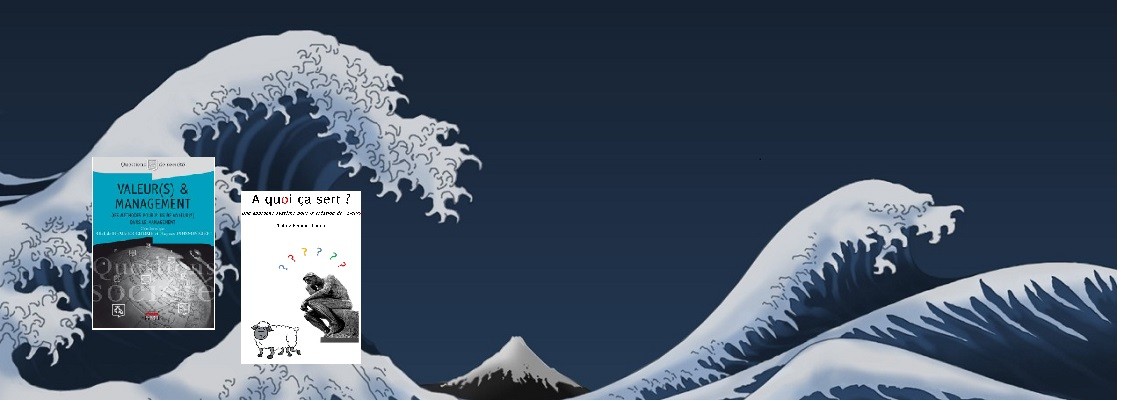 Our colleague Pierre Laprée from Per Angusta wrote a very relevant series about « From ideas to savings« . In the last issue he points out a real issue for Purchasers : « If the buyer has not sat down with the stakeholder to explain to him how we calculate savings, what this means in this project and obtained his “OK” on the numbers, then THE SAVINGS DON’T EXIST. »
Our colleague Pierre Laprée from Per Angusta wrote a very relevant series about « From ideas to savings« . In the last issue he points out a real issue for Purchasers : « If the buyer has not sat down with the stakeholder to explain to him how we calculate savings, what this means in this project and obtained his “OK” on the numbers, then THE SAVINGS DON’T EXIST. »
My (and his 😉 experience as a Purchasing optimisation consultant for more than 10 years showed me the major importance of this point ! Well, of course this is easier when you are paid on success fees 😉 (I am not anymore, but this is another story)
So please follow Pierre Laprée’s advice :
- you have to agree on upfront with the organisation what is a savings
- sit down with the stakeholder to explain to him how we calculate savings
- get a sign off from Finance.
But I would recommend going much further than this restricted view : focusing on savings calculation turns the Purchaser into a ‘cost reduction machine’, seen by the other functions as the arm of Finance to cut their budgets, so that shareholders get a bigger reward. Not a very good position to create mutual trust and collaboration, and become « business partners », is it ?
The article starts with « In one way or another (cost reduction, re-engineering of your needs or simply a solution to your previous problem) you’ve managed to improve the deal for your company », why then focus on « reporting on your savings » ?
Savings are only part of the improvement, may not be that important, are often difficult to calculate (cost avoidance, TCO …) and will not be approved if they are reducing other performances !
To my view, the value(s) created by any purchaser are its contribution to all the performances of its internal and external stakeholders :
- of course reducing the cost of supplies, and so improve the margin (for Finance) and/or reduce the price of services (for Marketing), but also
- securing quality and delays of supplies to deliver expected services to current Clients,
- managing agreed payments to secure company and Suppliers (!) cash situations,
- delivering innovations from suppliers to R&D and Marketing for improved services and/or future Clients requirements,
- providing Employees the tools they need for productivity and wellbeing,
- improving environmental and societal impacts of the company,
- sustaining the corporate image for clients and Employees,
- participating to the future corporate strategy on make/buy/rent issues, localisation, new supply chains and business models,
- etc.
The KPIs needed for these performances are NOT savings. They may be difficult to define and evaluate. But they of course have to be built with the stakeholders : who else knows what performance to measure ?! And this should be a dialog, not the purchaser explaining how to do it ! So the signoff should be from Finance (for money KPIs) but also Production, Engineering, CSR, Marketing, Legal, etc. (for other KPIs) !
Alain Alleaume and I are currently launching a benchmarking study in France on this quite hot topic how companies view « Value(s) creation by Purchasing ».
Interested in a english version ? Write us at

Permaliens
Thanks Pierre for this constructive answer !
You are right, value creation is one step further than savings … not always requested and more difficult to calculate. Should it be for the most mature purchasers ‘only’ ?
I do not think so, if you use the definition of ‘value’ that is common to specialists for decades (‘value analysis’ was invented by a GE purchasing engineer … 70 years ago !) :
Value(s) = need(s) satisfaction / cost(s)
So reducing costs IS creating value, IF it does not reduce needs satisfaction !
Any decent purchaser would not reduce cost to the point that users are not satisfied, or are they ?! My experience is that if you focus on cost, you end up going to LCC without checking quality and delays issues, or checking that your best offer supplier will be able to sustain for years, or discovering that their 2e rank suppliers do not act ethically …
This is why I call for ‘creating value’ first ! When you focus first on the real users’ needs, you discover that the actual solution is very often not the best one, and may be simplified.
For example, the ‘new’ users request for reduced environmental impact has opened to less packaging, less transportation, less energy … so less costs !
Ok, calculating ‘savings’ seems easier than measuring ‘created value’. At least, money seems objective, as value is obviously subjective. Your article shows it is not really that simple for savings, when you come up with cost avoidance, total cost, cash, ROI … And measuring value could be easier than you think : evaluating users needs satisfaction is not so difficult : quality managers do this for decades also, no ?
You are right, most people do not know how to do it :-/
This is where ‘value methods and tools’ could help. I use them for 15 years. You should try 😉 Maybe I could help ?
Permaliens
Olaf, please allow me to reproduce here the answer I made to your comment on our blog 🙂
***
Dear Olaf, first, thank you for taking the time to write such a comprehensive feedback !
I have to concede the omission on the measurement of value and the focus on financial gains… My bad.
I cannot disagree with any of the things you say: financial benefits (or « savings » or « cost reductions ») are not enough and can be misleading, even counterproductive sometimes (although stakeholders are usually able to prevent this from happening).
And it seems we agree on the fact that Procurement cannot work on its own, without collaboration with/scrutiny from other functions.
Back to savings.
You may find this is a restricted view. But we have to admit one thing: if savings cannot be the sole way to measure the performance of a Procurement team, it is a necessary element.
I’ve never seen a Procurement team able to justify its existence (=its cost) without bringing some cost reductions. This is true with other functions, e.g. marketing having to justify the ROI of their campaigns.
I will actually go one step further. I think savings are a stepping stone.
Focusing on quality, risk, innovation is what will deliver the most important and more sustainable value.
But 1. not all procurement organisations (and companies) are wired or mature enough to do this, 2. this will not happen overnight.
To reach this state of internal and external collaboration, the one that creates value, Procurement needs to earn their stripes, build the trust and position themselves as the most adequate function to lead this effort.
This often starts by « showing the money ». Then you generate more savings AND mitigate some risks. Then you also bring new solutions…
This is how you initiate a virtuous circle.
This is how you become value-focused rather than cost-focused. It is a journey and in my opinion, it generally starts with savings.
A more technical aspect: I’ve been challenged a lot on these topics, I’ve worked with prospects and clients on how to measure such value. We have never been able to find anything conclusive so far. Unfortunately.
So I’m more than interested in taking part to your & Alain’s study and creating a more holistic view of Procurement performance. Count me in!
Permaliens